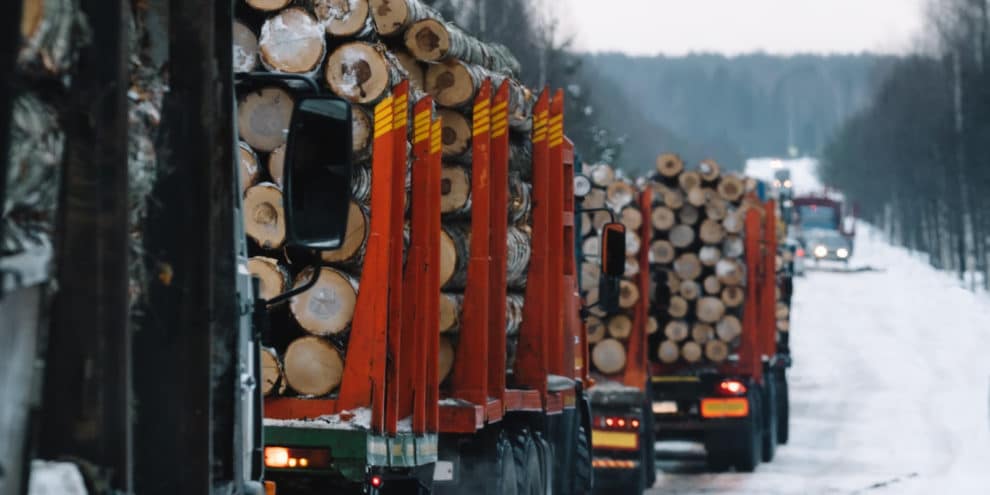Timberland investors and wood-using firms rely on a robust and reliable supply chain. While perhaps intuitive and obvious, the pandemic and weather events of 2021 heightened our sensitivity to and dependence on this system. During the second half of 2021, as we collected market intelligence and transaction information for the Forisk Market Bulletin, supply chain concerns from current forest industry investors and operators dominated the conversations.
Supply Chain Woes
Supply chain issues continue to trouble forest industry managers. One lumber firm executive told us, “We’ve got wood right now, but our challenge is labor.” Dr. Shawn Baker, Forisk’s VP of Research, analyzed data from the Bureau of Labor Statistics that reinforces this issue and provides context: the logging industry shrank while the economy grew from 2015 to 2019.
We speak with hundreds of foresters, investors and managers each quarter and recent conversations converged on one theme: where do we find the people we need in the woods, in the mills and behind the wheel? As Dr. Baker emphasized during recent presentations, “hauling is the bottleneck operation…growing trucking capacity is all about competition for labor.” As such, hauling remains the weakest link in the wood supply chain, and solutions remain elusive.
Executives with integrated forest industry firms, timberland investment managers and building products manufacturers shared multiple examples of recent pain points:
- “Logging crews are cannibalizing each other’s operators.”
- “We’re losing woods workers and guys in the mill at the same time to other industries.”
- “There is craziness in the wood supply chain. I’m just wondering who’s going to run out of people first.”
One procurement manager sounded more hopeful after working through a series of internal efforts, noting that the situation at each mill and for each market differs. That said, the fundamentals align with respect to turn times, optimizing truck weights and truly treating hauling as a standalone business. “Maybe we don’t have too few trucks. Maybe we just need to take better care of the trucks and drivers that we have.” This reminds us that, regardless the size and depth of the issue, we always have improvement opportunities. To quote a Chinese proverb, “the journey of a thousand miles begins with a single step.”
While supply chain stresses increased, one wood procurement manager said, “We’re not paid to be content or complacent.” In other words, a lot of our work supports efforts to, as a mentor of mine used to say, “get rubber under the wood.” Still, the reality and market context of timber continues to evolve.
This content may not be used or reproduced in any manner whatsoever, in part or in whole, without written permission of LANDTHINK. Use of this content without permission is a violation of federal copyright law. The articles, posts, comments, opinions and information provided by LANDTHINK are for informational and research purposes only and DOES NOT substitute or coincide with the advice of an attorney, accountant, real estate broker or any other licensed real estate professional. LANDTHINK strongly advises visitors and readers to seek their own professional guidance and advice related to buying, investing in or selling real estate.










How do you feel about planting a series of bamboo forests in the desert? Possibly using gray water from a retirement community?